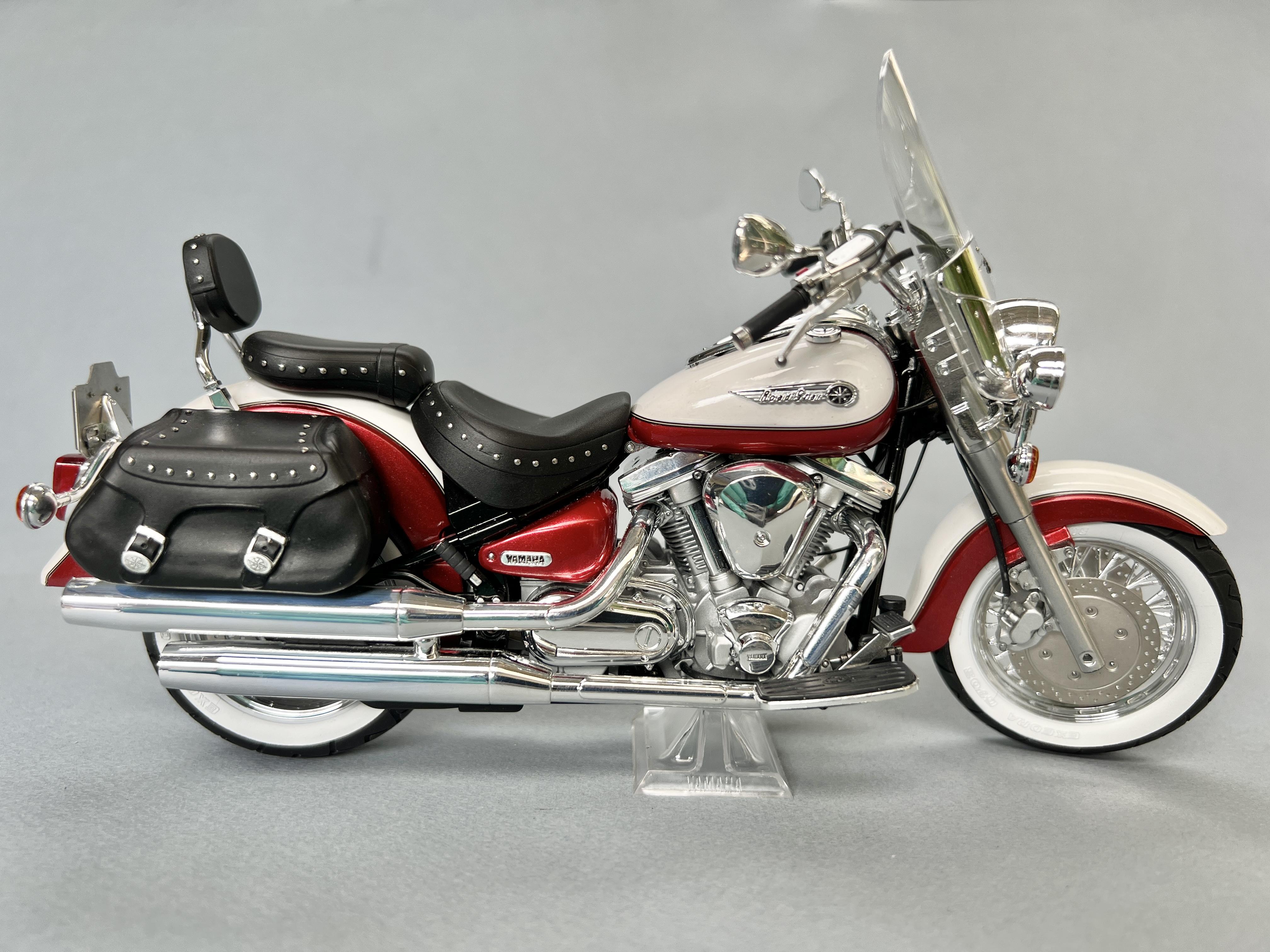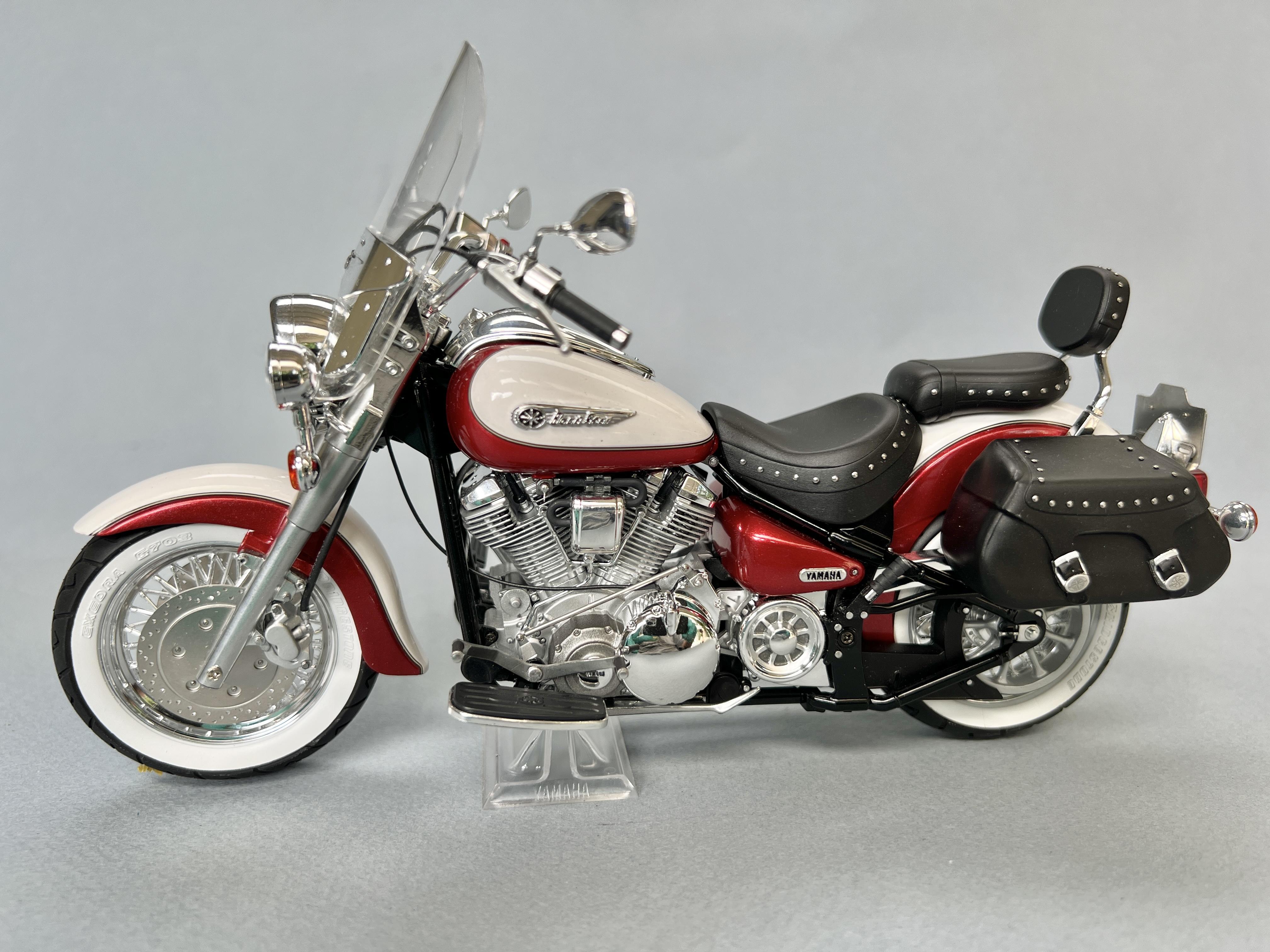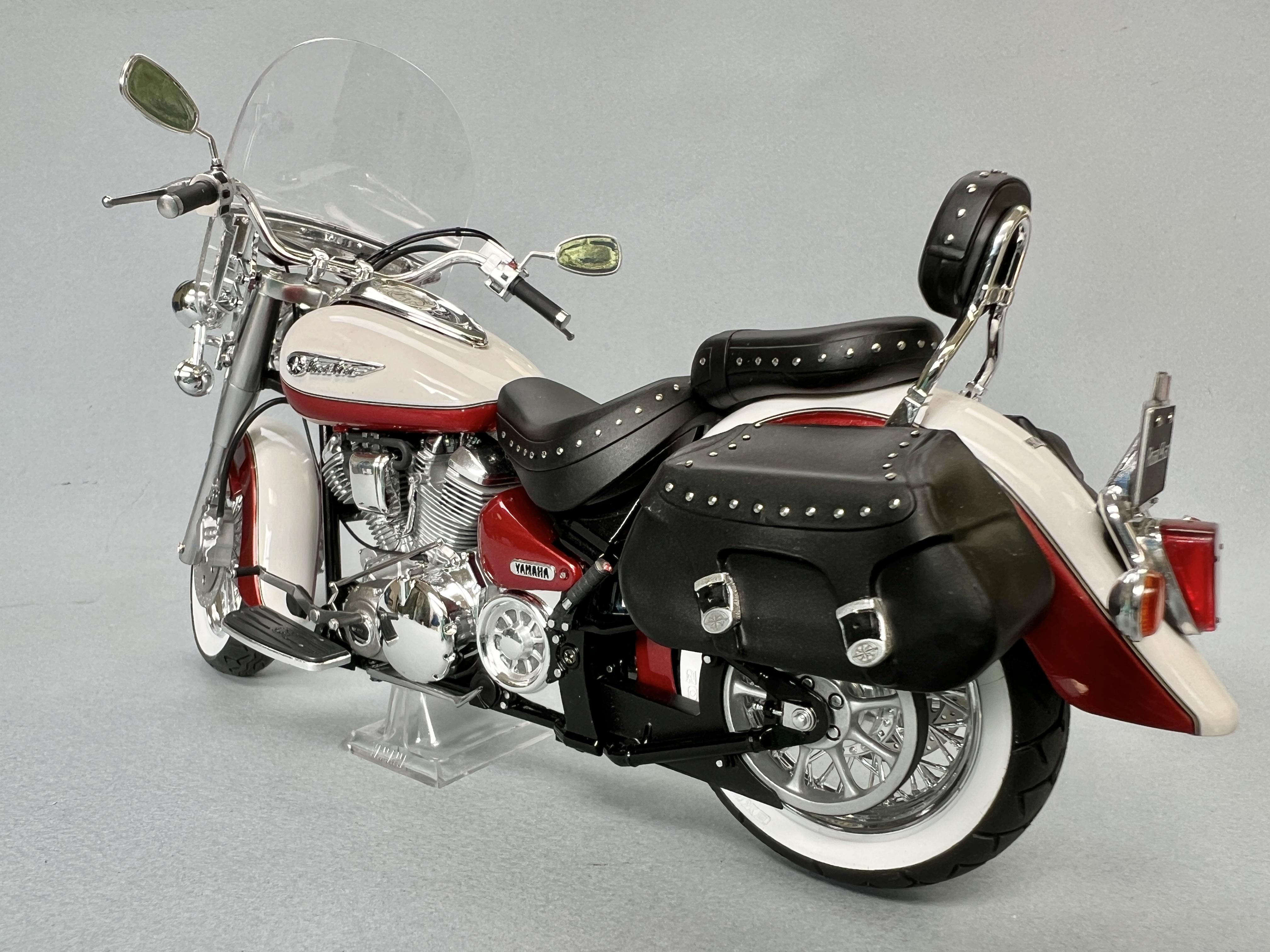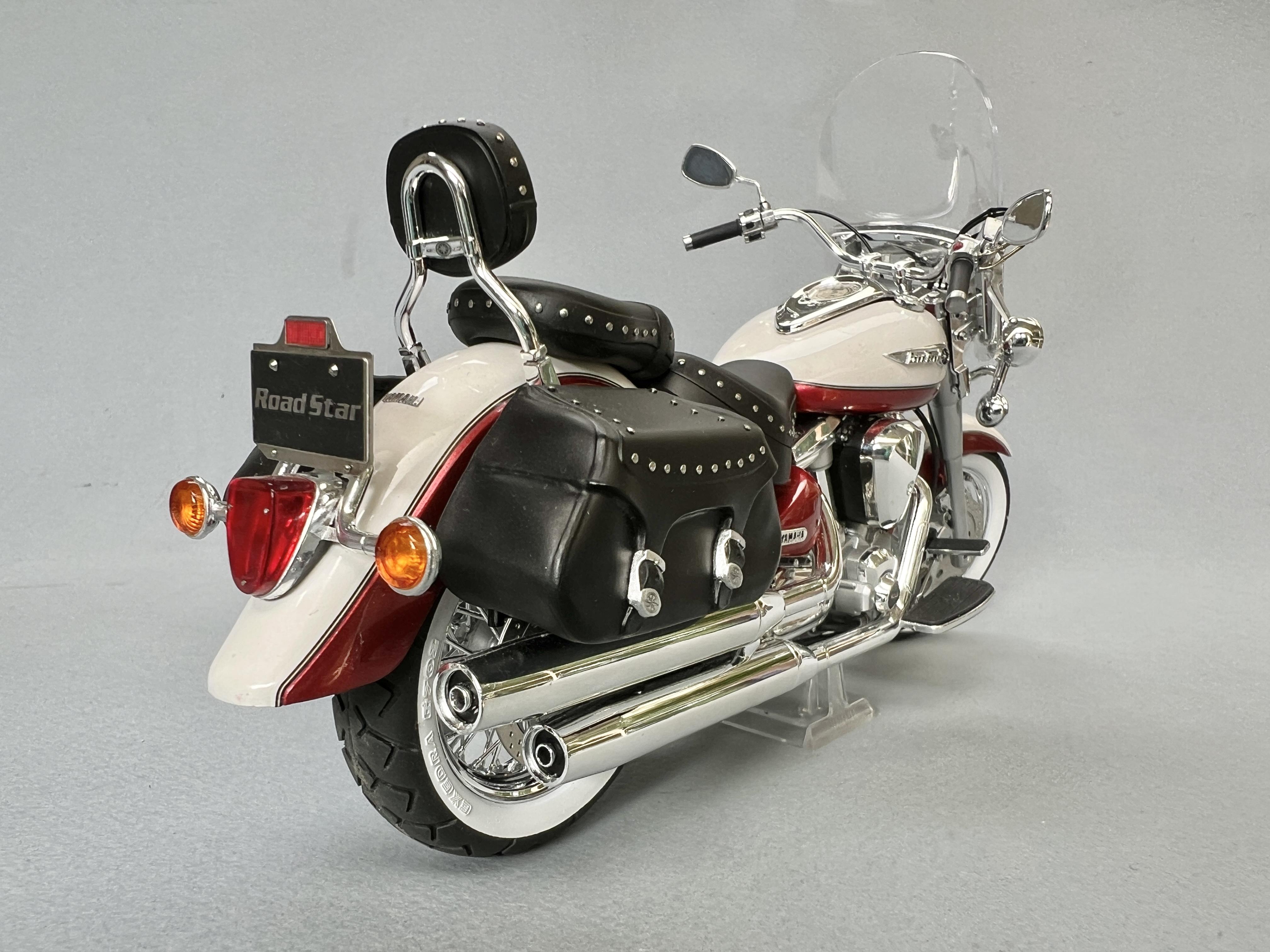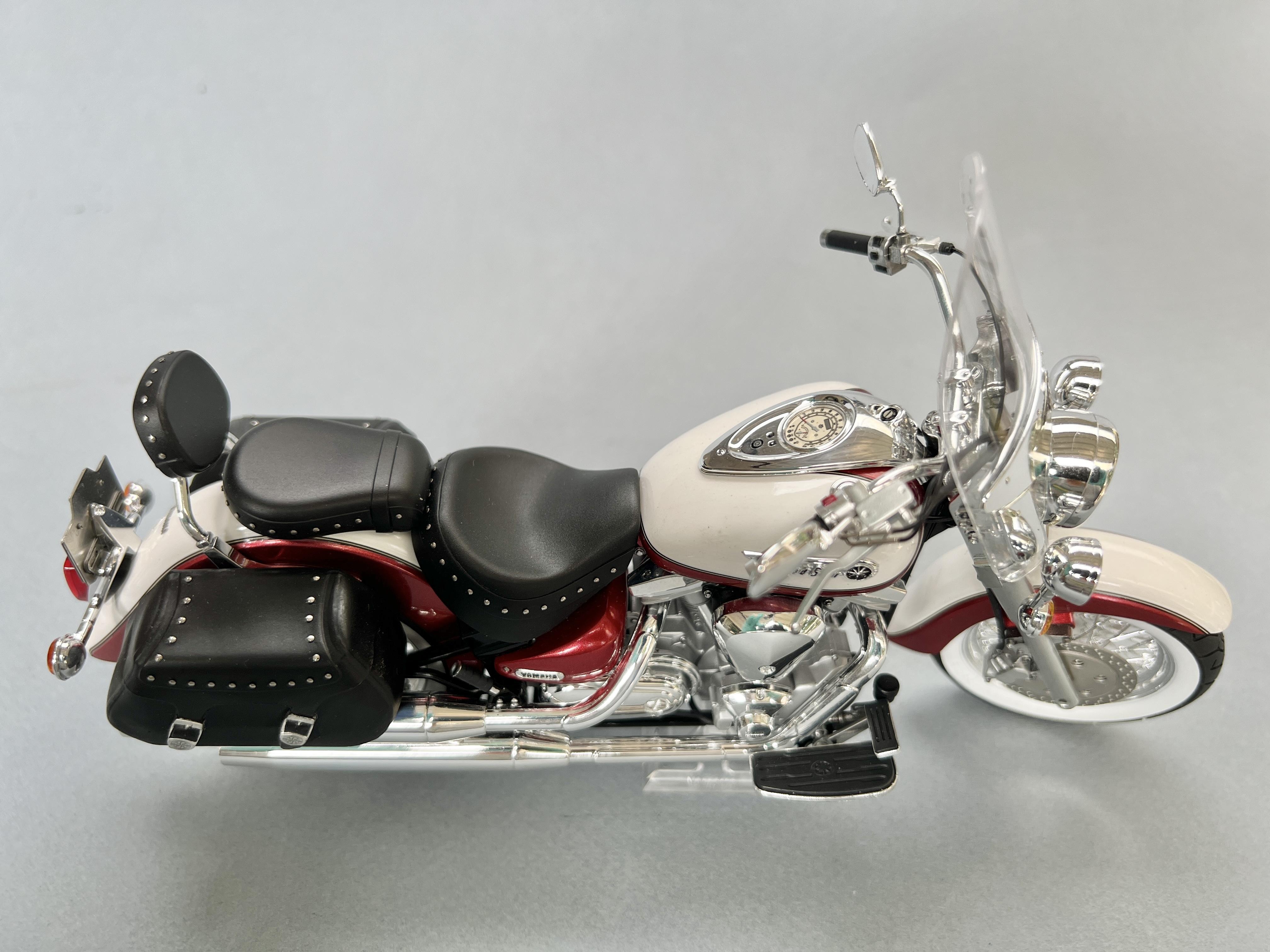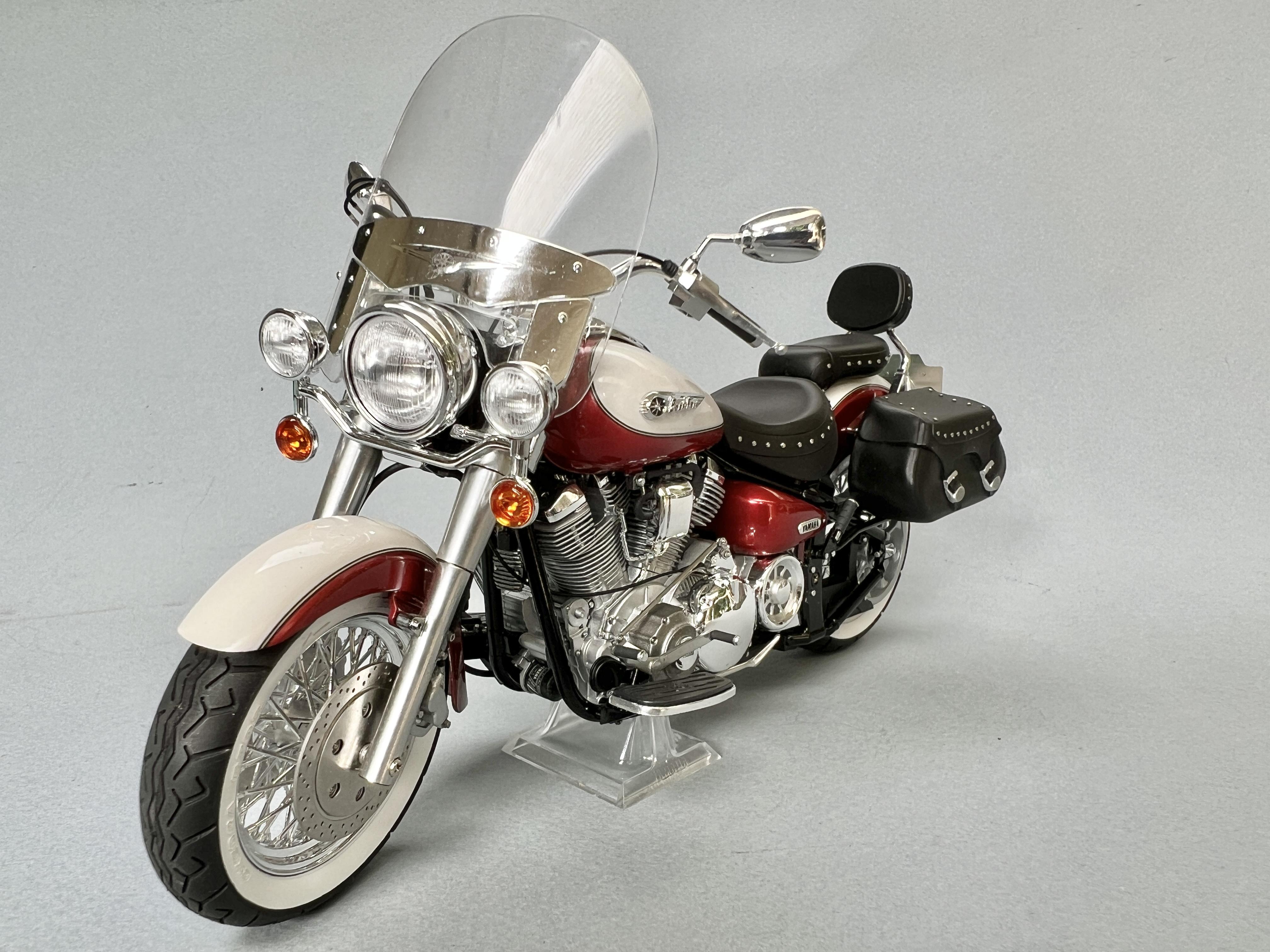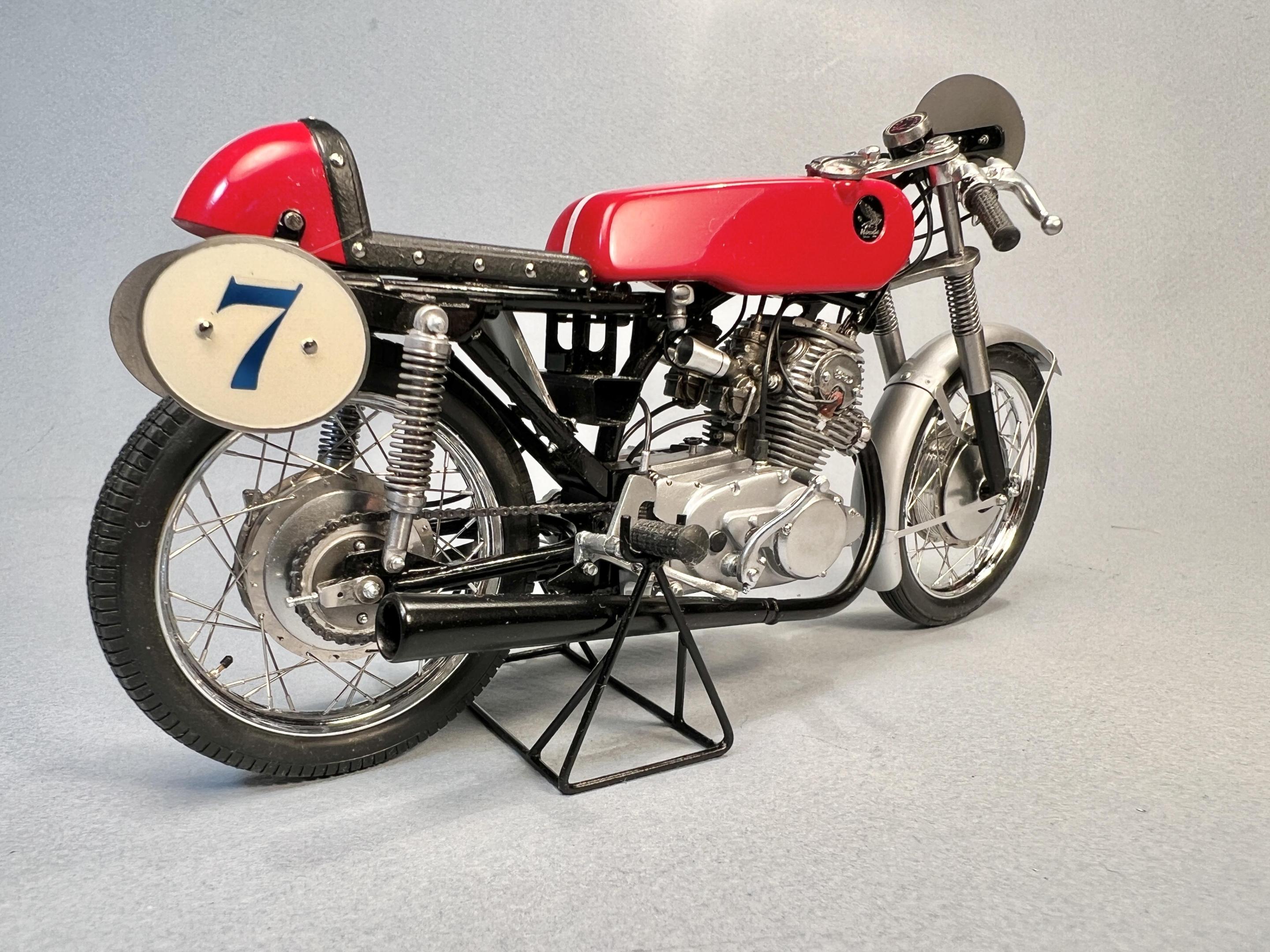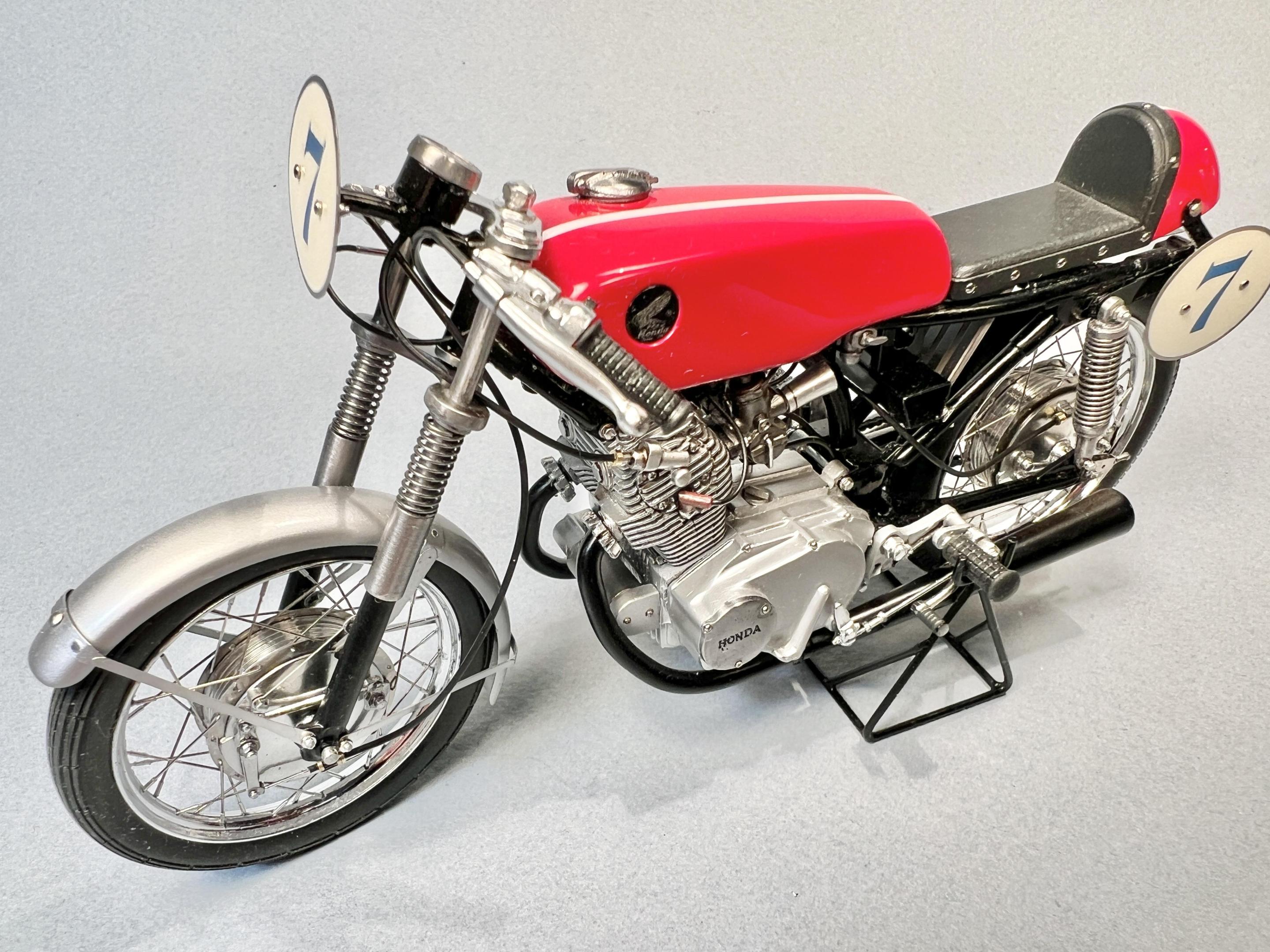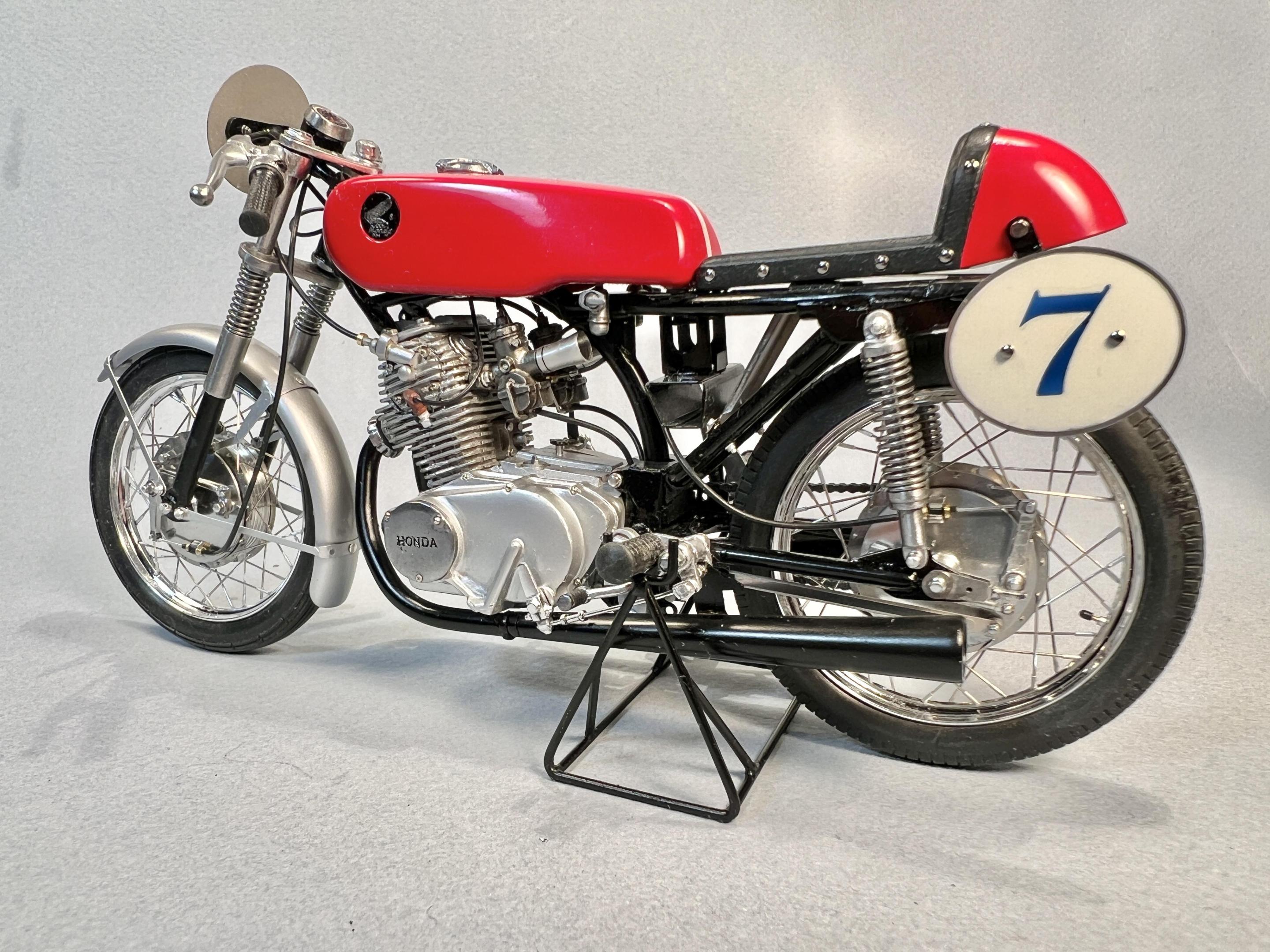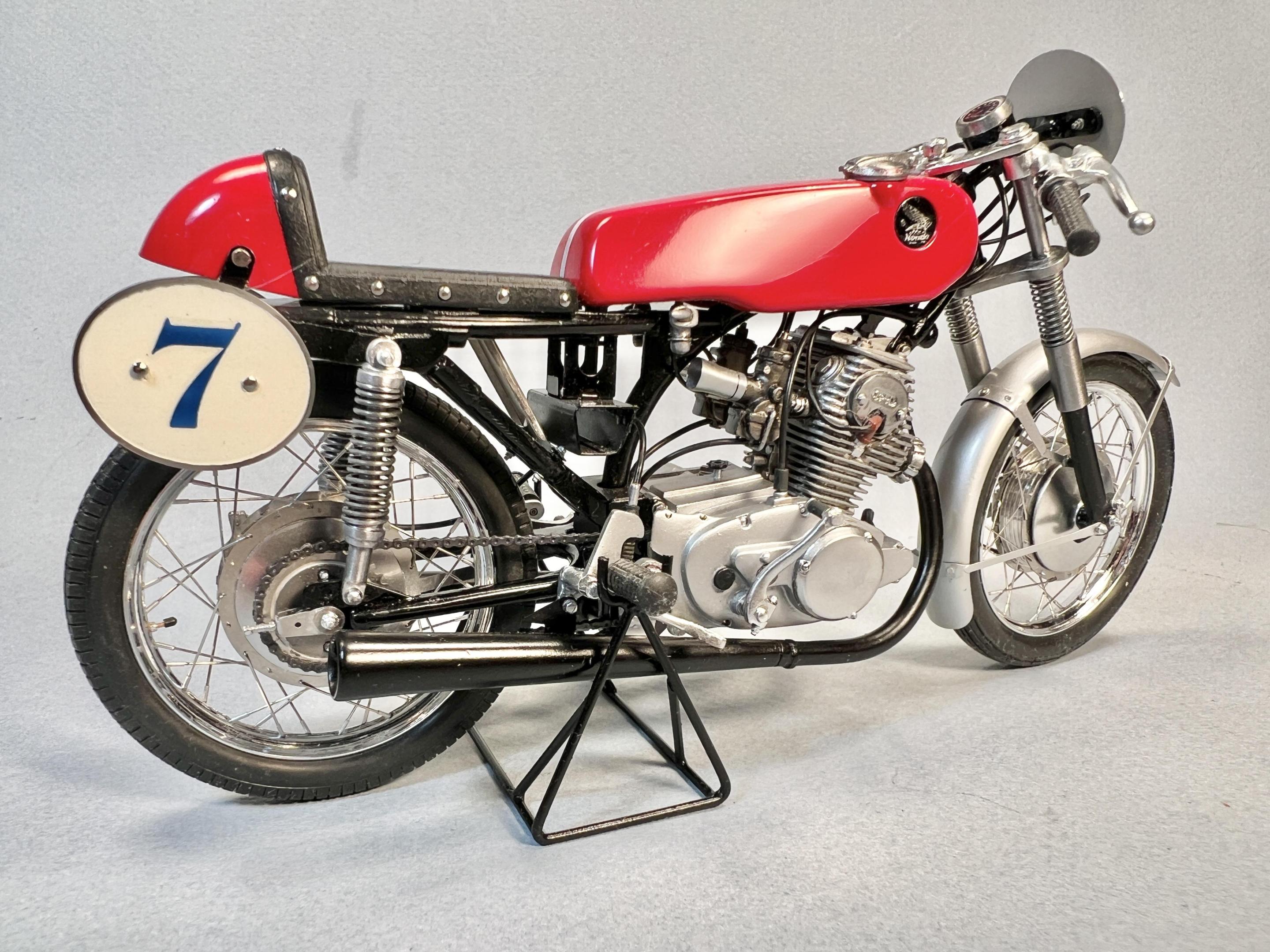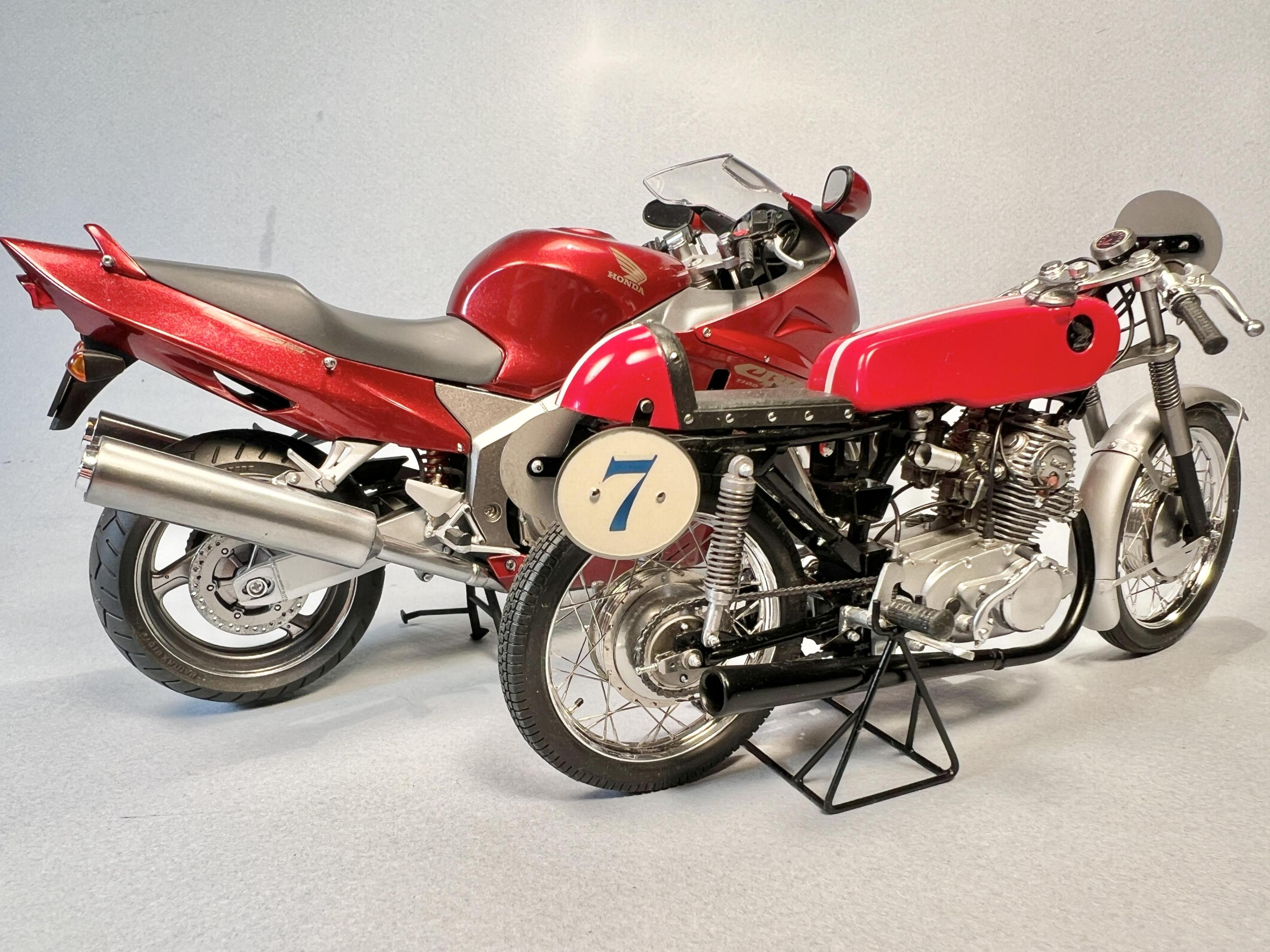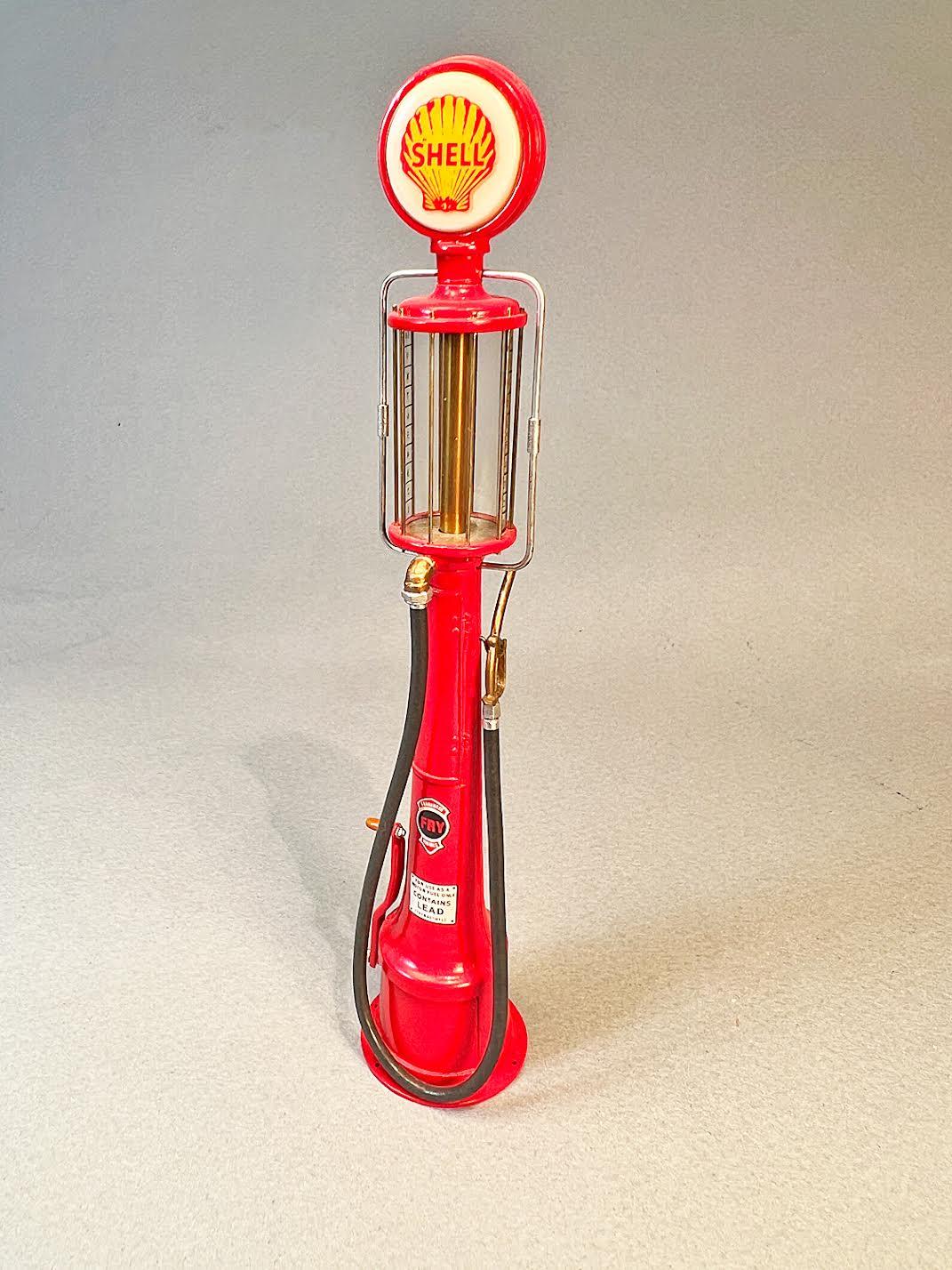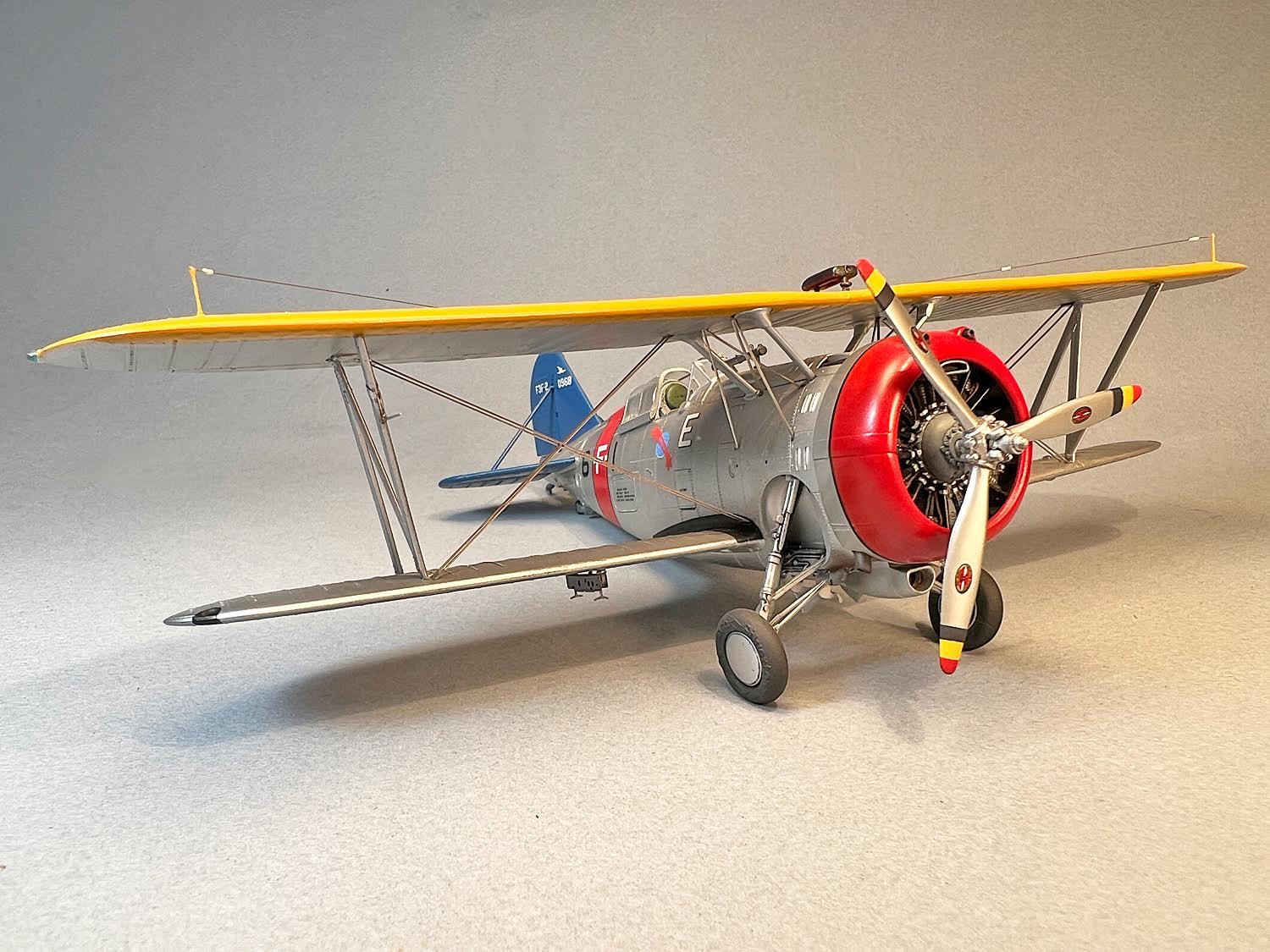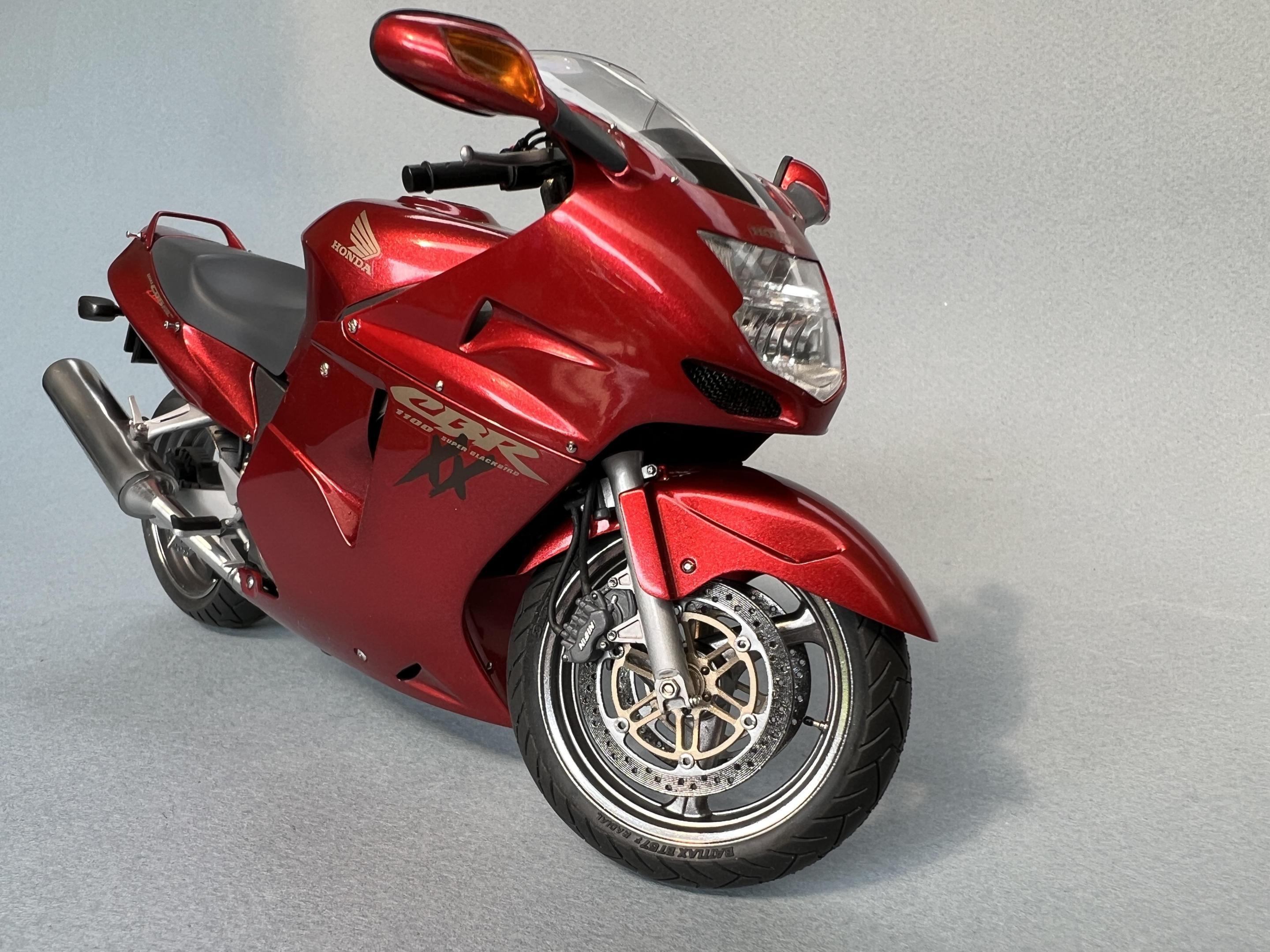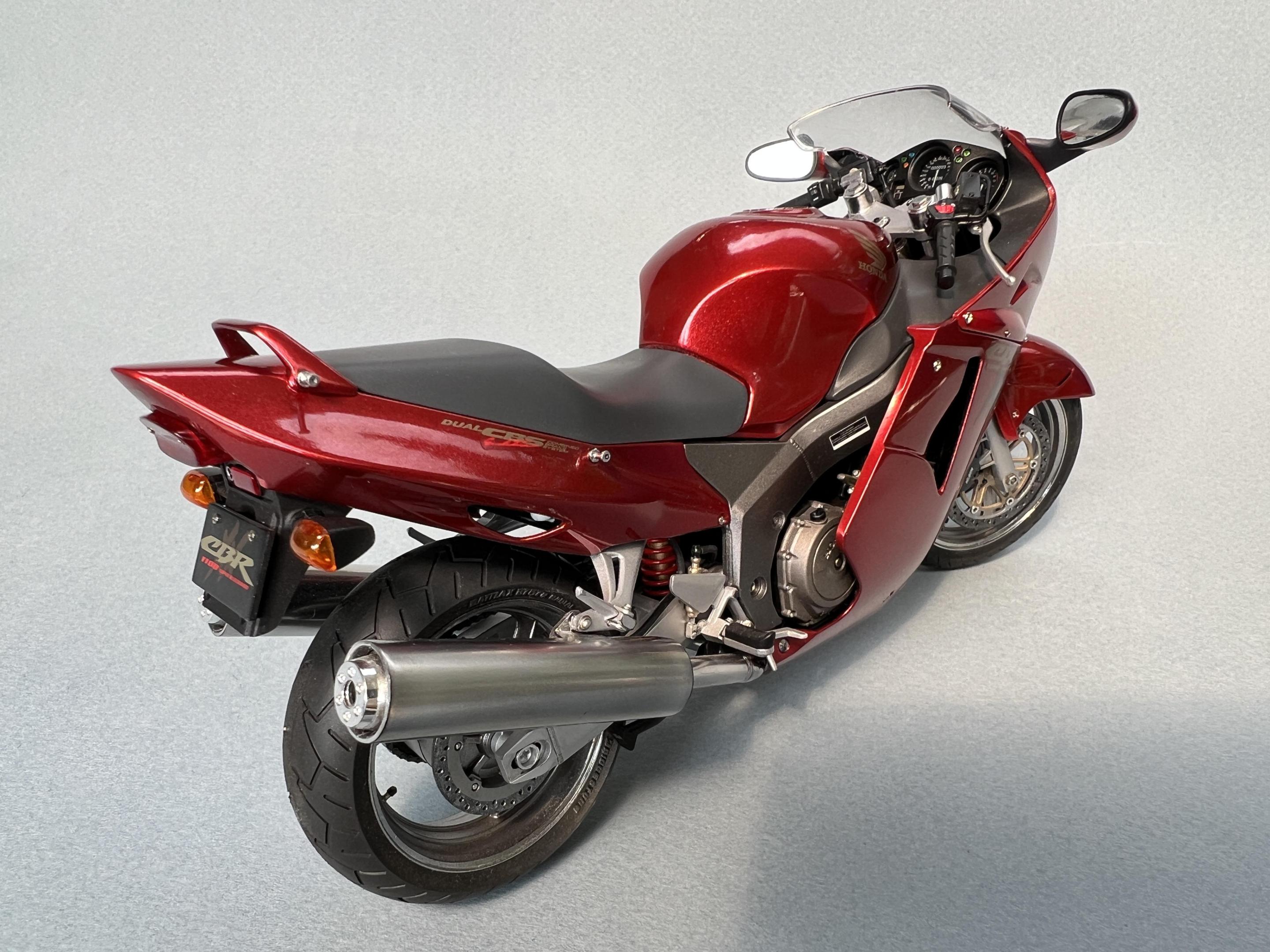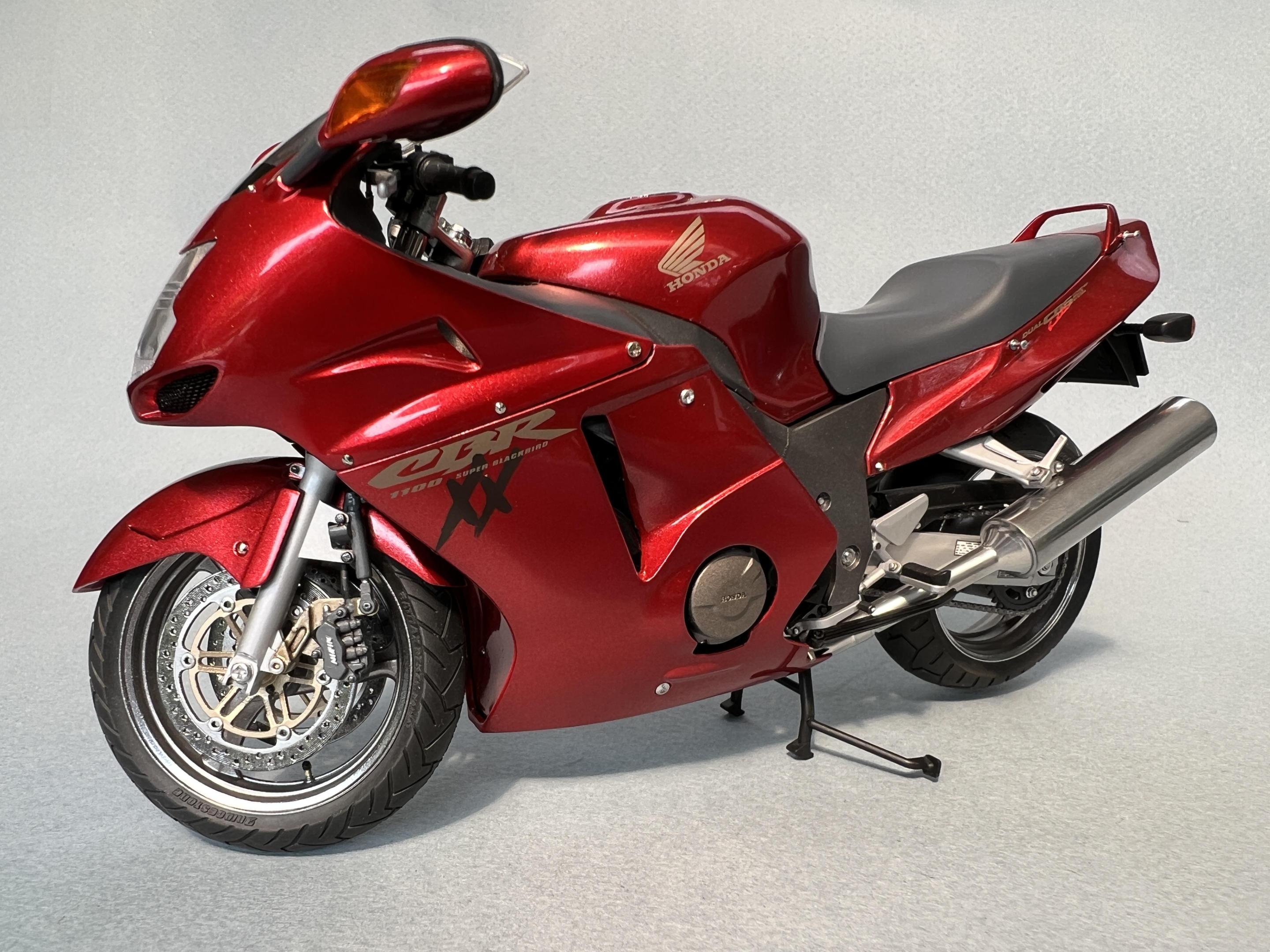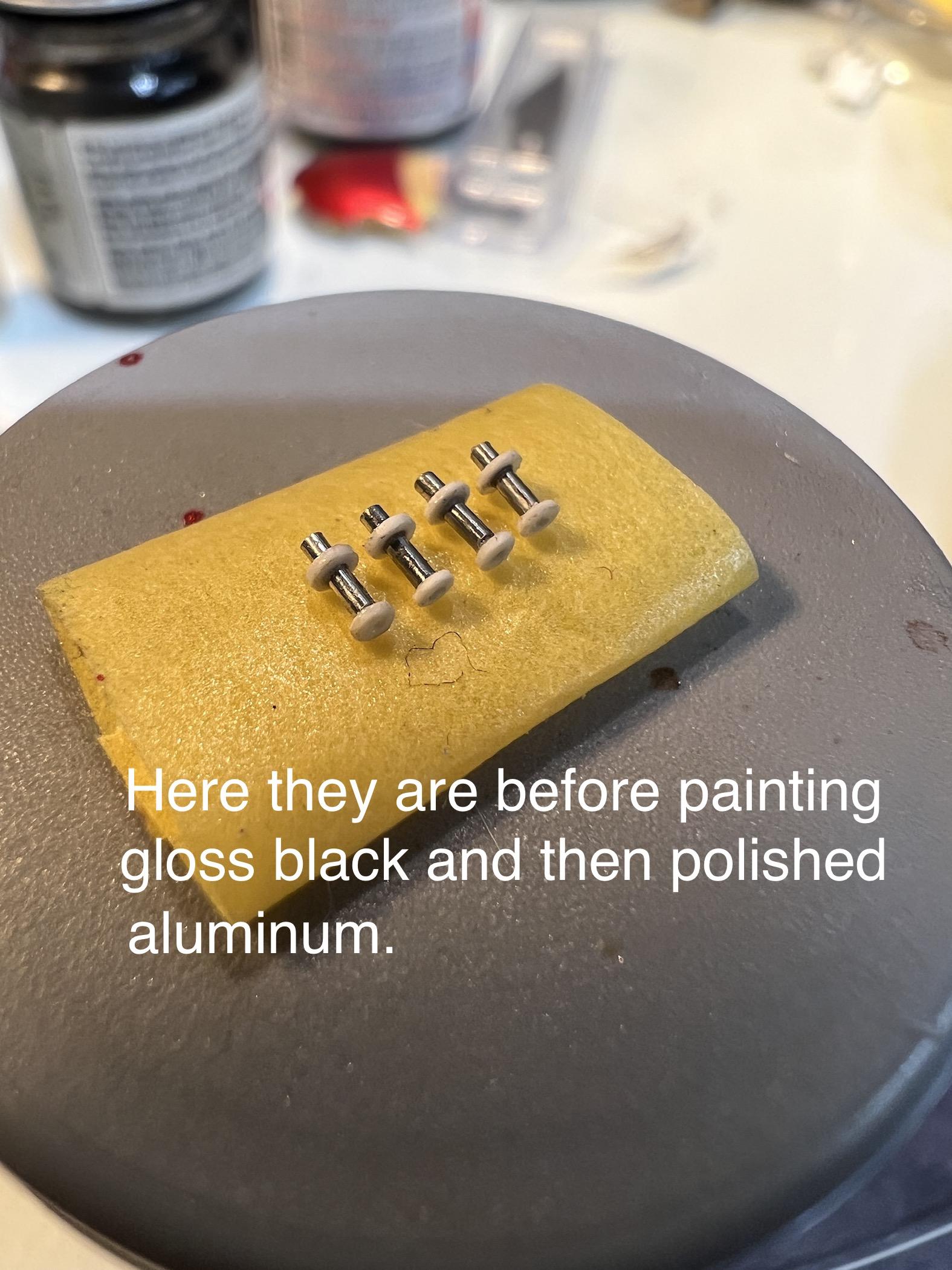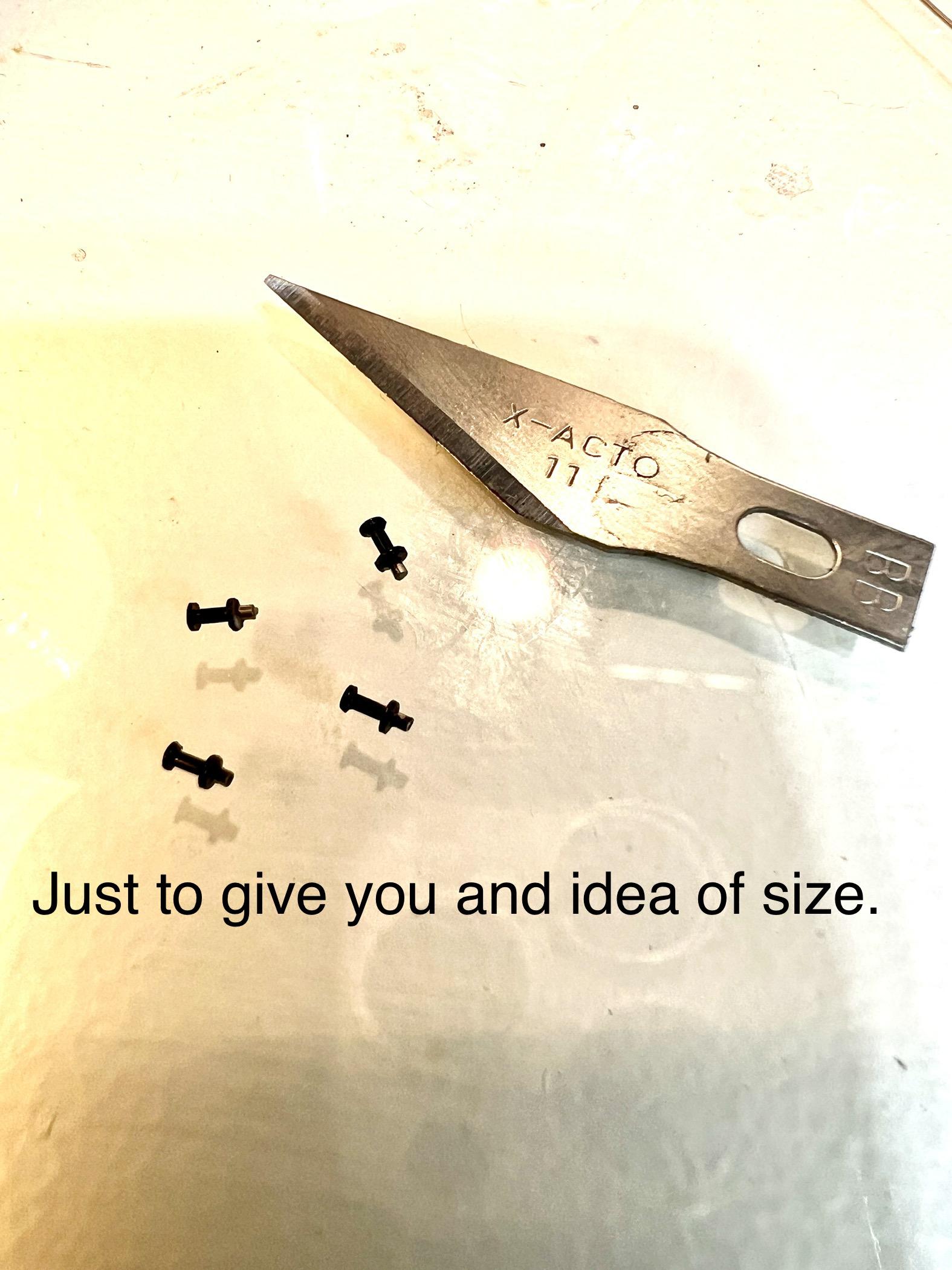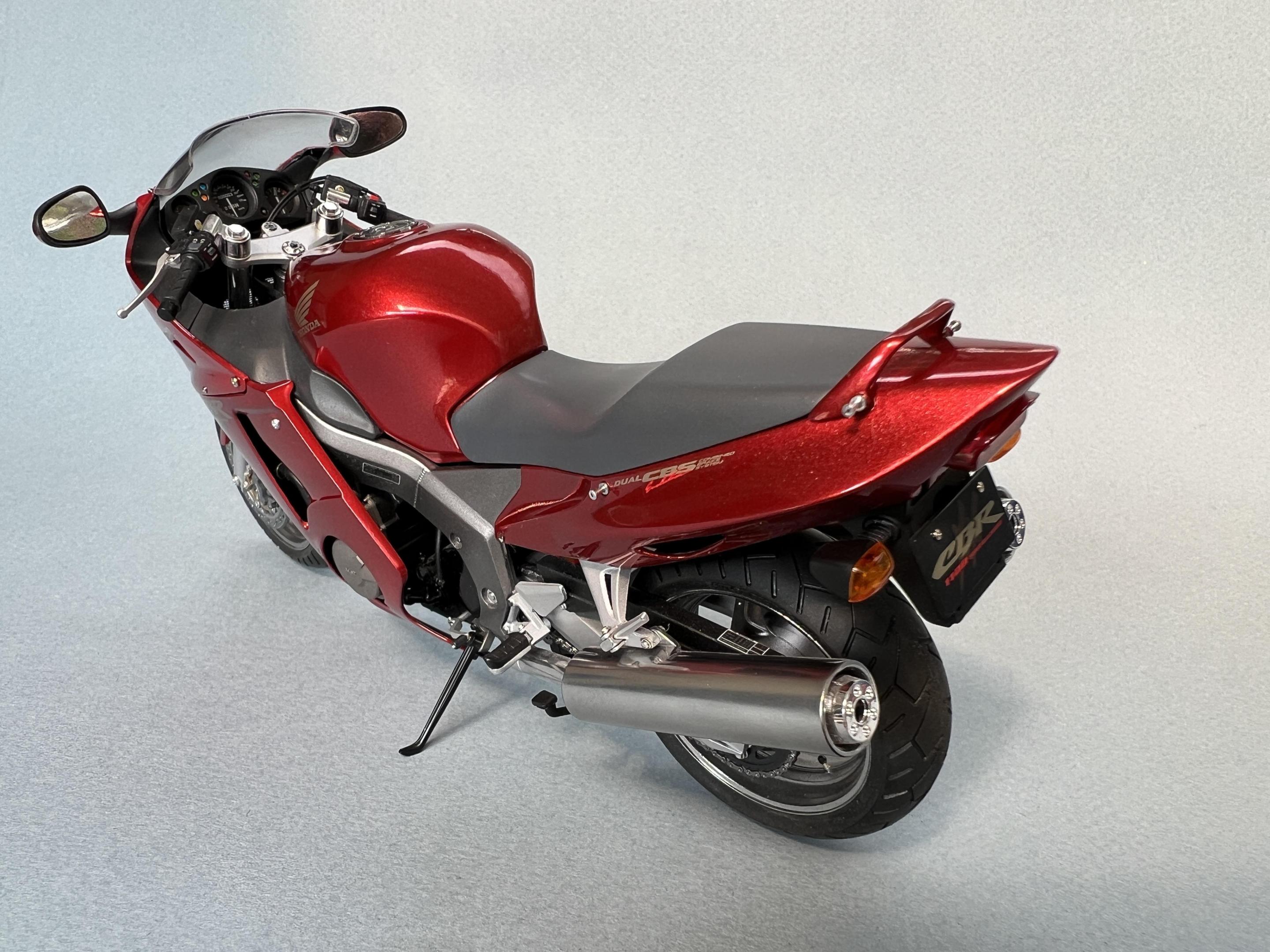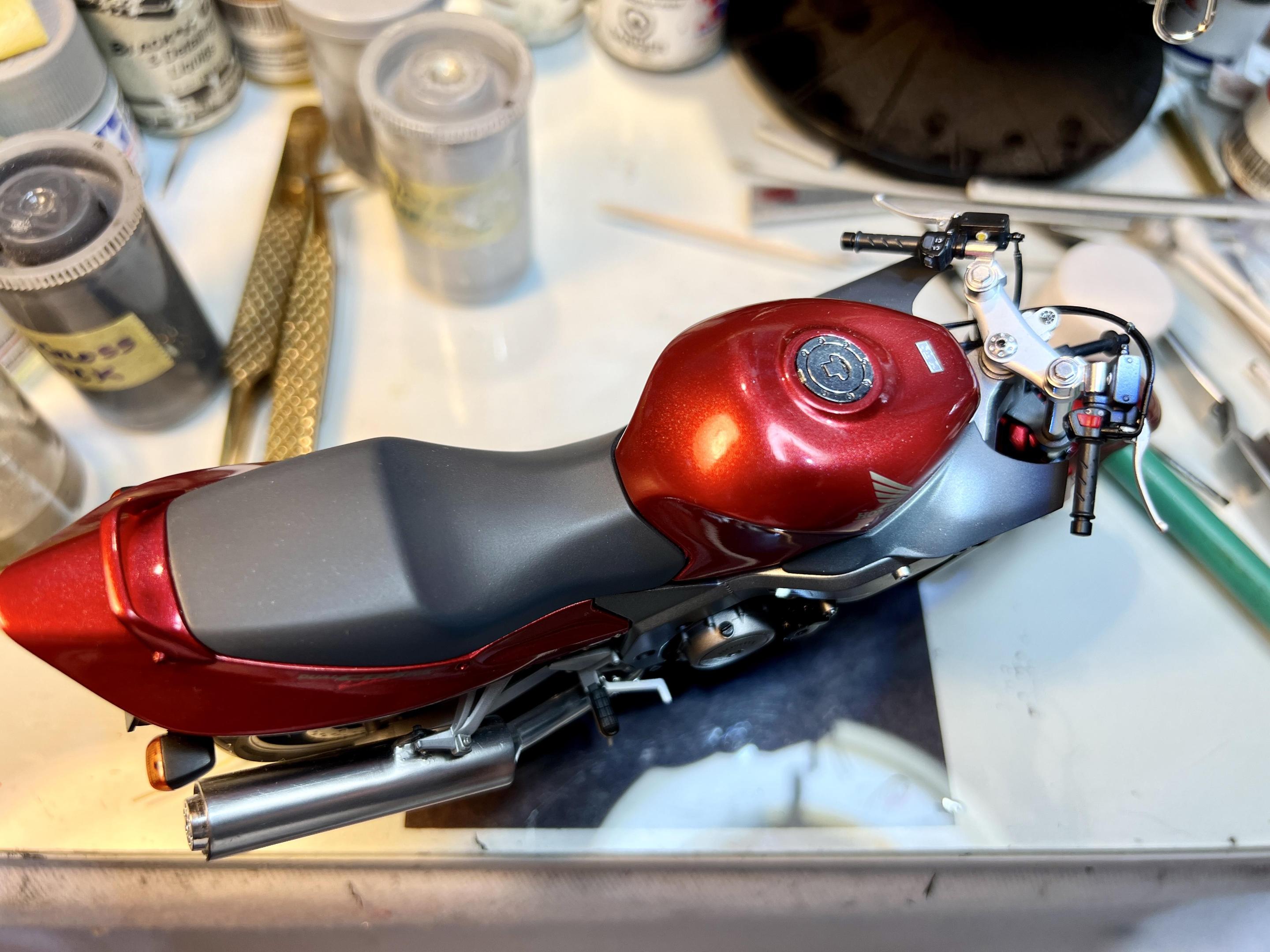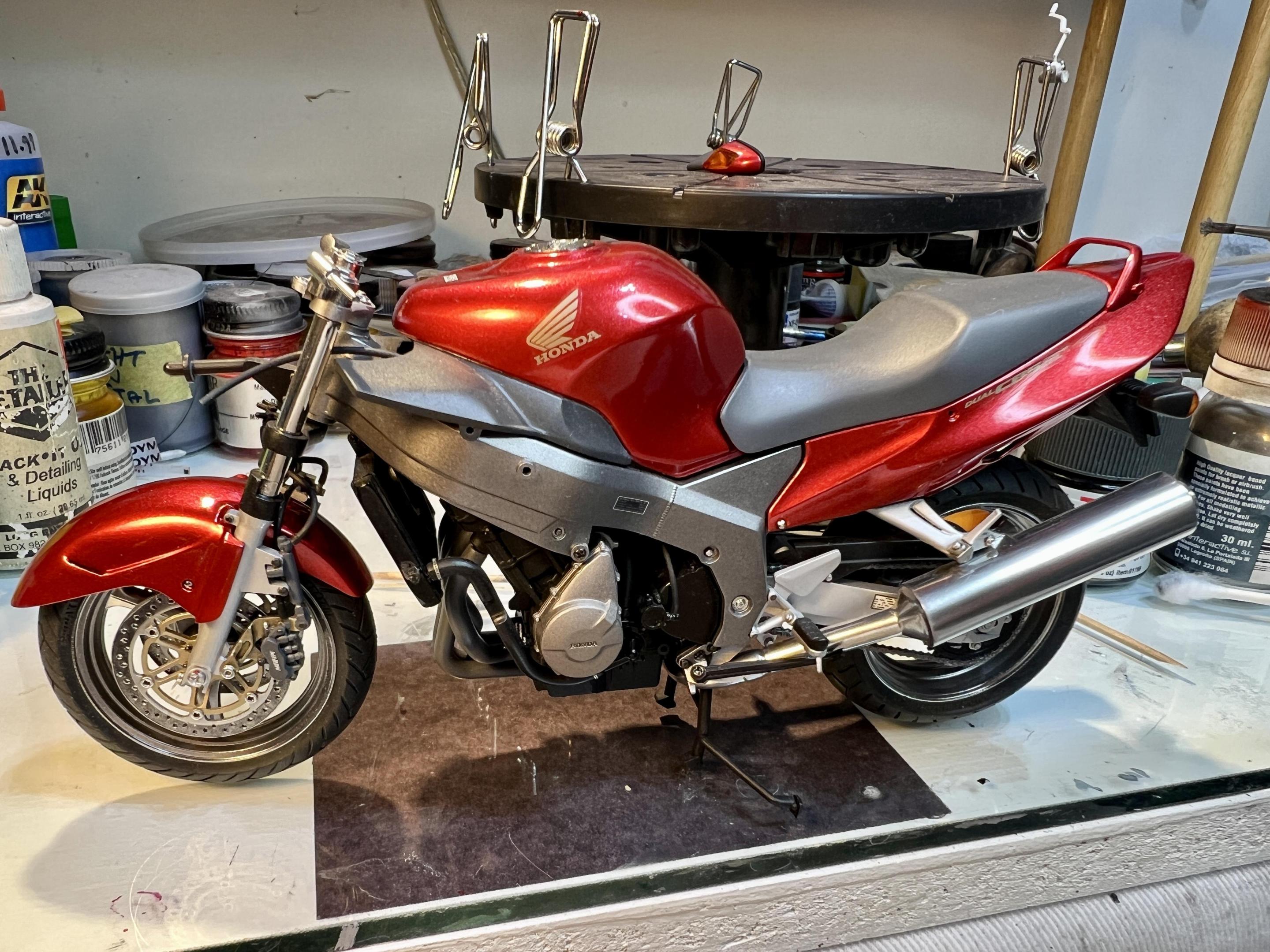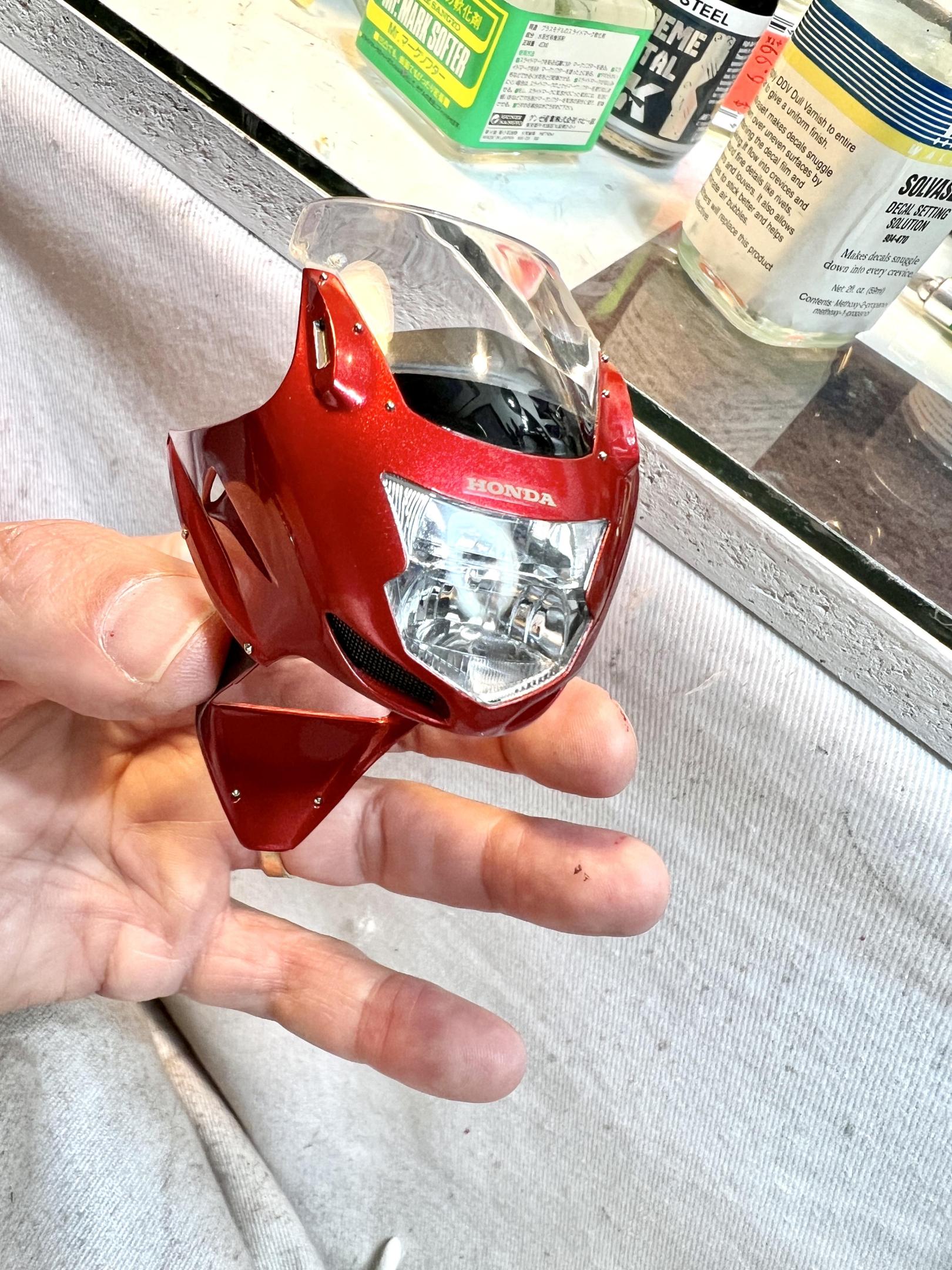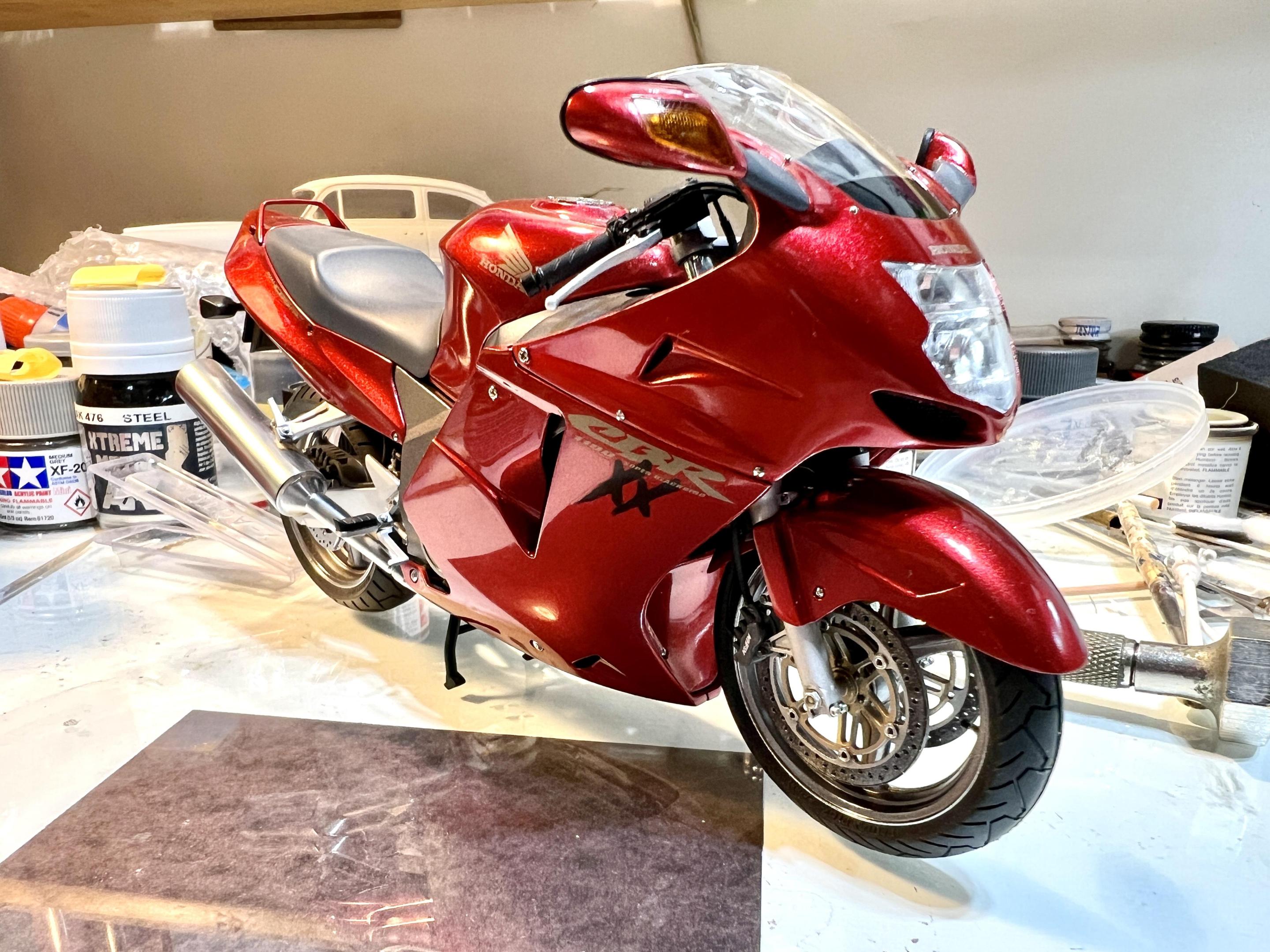-
Posts
160 -
Joined
-
Last visited
Content Type
Profiles
Forums
Events
Gallery
Everything posted by Wolf
-

Yamaha XV1600 Road Star Custom
Wolf replied to Wolf's topic in All The Rest: Motorcycles, Aviation, Military, Sci-Fi, Figures
Mike, Bob, thanks for taking the time to have a look and for leaving your kind comments. They’re much appreciated. Cheers, Wolf -

Yamaha XV1600 Road Star Custom
Wolf replied to Wolf's topic in All The Rest: Motorcycles, Aviation, Military, Sci-Fi, Figures
Thank-you John. Cheers, Wolf -

BMW r1250
Wolf replied to kacitgirl's topic in All The Rest: Motorcycles, Aviation, Military, Sci-Fi, Figures
Nicely done Kaci. The pannier luggage set was definitely worth adding. Cheers, Wolf -

Yamaha XV1600 Road Star Custom
Wolf replied to Wolf's topic in All The Rest: Motorcycles, Aviation, Military, Sci-Fi, Figures
Gentlemen, Thank-you for all your kind responses. They’re much appreciated! That’s a great question Brian. I don’t know. I’ve been dealing with cancer since the end of last December. After chemo, radiation, and two surgeries, I’ll be starting my second round of chemo at the end of this month. I have no idea how I’ll react to the chemo and what side effects I may have to deal with. At this stage of the game I’m just hoping to make it to the show. 😬 -
I just recently finished building Tamiya’s 1/12th Yamaha XV1600 Road Star Custom. I used some of the Hobby Design detail set specifically for this kit and added aftermarket fasteners from various different sources throughout the build. I also replaced all the moulded rivet detail for the seats, backrest, and saddlebags by drilling holes and installing Tameo’s 0.9mm rivets purchased from Spot Models. The paint scheme was done using Tamiya’s spray can lacquers Pearl White and Pure Metallic Red decanted and shot through the airbrush. I used the kit provided decals and masks. To give the model a little more bling I masked off and sprayed the retro white walls on the tires with Tamiya’s Fine White Primer after I had installed the spoked wheels as I didn’t want to flex the tires over the rims and risk cracking the white walls. Tamiya’s bike kits are a real joy to build and I highly recommend them to anyone wanting to build a bike. Cheers, Wolf
- 18 replies
-
- 15
-

-

Galaxie 1947 Chevrolet Fleetmaster
Wolf replied to Katsusauce's topic in Model Building Questions and Answers
Derek, I’m not sure if you’re still looking for the etch parts for the Galaxie ‘47 Chevrolet Fleetmaster Aerosedan but Spotlight Hobbies has it available. It’s priced at $6.95 plus shipping. https://www.spotlighthobbies.com/all-products/decals/9131/galaxie-limited-chevy-fastback-sedan-delivery-photo-etched-stainless-steel-metal-transfers/ Hope this helps. Cheers, Wolf -
Just completed this build. Certainly not the easiest build as the kit is 90% white metal with the remaining parts in styrene (fuel tank, seat, and front fender) and photo etch. Lots of metal rods and wire for the spokes as well. Many parts were modified to enhance their detail and lots of scratch building details was necessary to build an accurate representation. For example the carbs were heavily reworked and the intake trumpets were scratch built to replace the horrible kit items. Top Studio detail parts were used throughout as well. Thinking far ahead in the instructions is mandatory as all parts had to be dry fitted well in advance to ensure they’d fit when the time came to add them to the assemblies. The #7 decals came from the spares box as no decals come with the kit. In the end I’m happy with the results but I think I’m getting too old to have to deal with all the wailing and knashing of teeth so the next bike will be another Tamiya offering. The last photo shows my previous Honda bike build alongside the Clubman as a size comparison. Cheers, Wolf
-
Congratulations on two beautiful builds! I agree with you that Gunze’s Hi-Tech kits are not the easiest to build as I just finished their 1/12th Honda CB72 Clubman kit that I received last Christmas. Lots of work involved in cleaning up the white metal parts and some were replaced with scratch built alternatives as their castings were quite rough. Nice models when finished if you can persevere through to the finish. Cheers, Wolf (who’ll likely stick to Tamiya’s 1/12th bike kits)
-

Shell gravity feed gas pump.
Wolf replied to Wolf's topic in All The Rest: Motorcycles, Aviation, Military, Sci-Fi, Figures
Thanks Chris! Cheers, Wolf -

Shell gravity feed gas pump.
Wolf replied to Wolf's topic in All The Rest: Motorcycles, Aviation, Military, Sci-Fi, Figures
Thanks Warren. Yeah, the made a number of models of these old pumps. Lots of different logos too like Texaco, Phillips 66, and more. You could even wire ‘em up so the globe on top could illuminate. Thank-you Jim. Like I said, I wish I had bought more of these. It’ll look good with a couple of my Johan ‘32 Cadillacs sitting beside it. I imagine those ol’ V-16s were a bit thirsty. -
Something a little different. This is R&D Unique’s 1930s Shell gas pump. You used the handle on the side of the pump to pump gas up into the glass cylinder which showed how much fuel you were going to purchase. Gravity did the rest when you pulled the handle on the nozzle at the end of the hose. The silver conduits from the pump body to the top contained the wiring to illuminate the globe. I really wish I had bought more of these multi media kits.
-

1/48 Grumman F3F-2
Wolf replied to SpikeSchumacher's topic in All The Rest: Motorcycles, Aviation, Military, Sci-Fi, Figures
Jetz muss ich sagen “Ausgezeichnett”! I built this same kit when it was first released by Accurate Miniatures. I found it to be an excellent kit although I did have to fettle around with the photo etch rigging to get it as straight as possible. It’s not perfect but it’s close. I hope you don’t mind me showing you a photo of mine in your thread. If so, please let me know, I’ll delete it. Cheers, Wolf -
She’s done! The last bits to add, which weren’t included in the kit but visible in all the photos I’ve seen of the bike, are the four small pegs that extend from the bodywork to allow the rider to strap down any extra baggage he might need to carry along. Simple little items really but proved to be a bear to make as they are so small. I tried to find photo etch washers for the base and ends of each one but couldn’t find anything suitable. I wound up making them by punching out eight small styrene discs with the inside ones a larger diameter for the base end. I drilled out the centres to accommodate short lengths of stainless tubing which was much easier said than done but I eventually got 4 assemblies exactly the same. These were then painted in gloss black lacquer followed by Alclad II Polished Aluminum. I used 5 minute epoxy to secure them as it gave me lots of time to ensure proper alignment. All in all I’m quite pleased with the way the model turned out and I’m sure there’ll be a few more 1/12th Tamiya bikes on the bench in the future. Thanks for following along. …..and here they are mounted on the bike. I’ll have more photos posted in “Under Glass” shortly. Cheers, Wolf
-
They say that beauty is in the eye of the beholder and to my eye the front bumper and valance modifications are indeed beautiful. Well done Greg! With regards to the wheels and tires I personally think the stock wheels, hubcaps, and white wall tires give the Nomad such a classic look. That said I’m sure you’re going to use something that will look just right. Cheers, Wolf
-

Bathtub Buggy Build
Wolf replied to Farmboy's topic in WIP: All The Rest: Motorcycles, Aviation, Military, Sci-Fi, Figures
Beautiful attention to detail throughout Mike. Brilliant! Cheers, Wolf -
Almost done with this build. The paint is on all the parts and it’s just a case of scratch building a few small details to finish it off. The red paint is Tamiya’s Pure Metallic Red, and as usual for me, decanted from the spray can and shot through the airbrush. Three coats of red and two coats of Tamiya’s clear gloss. I used tiny bits of decal to add some of the stencils for the various switches on the handle bar controls. I also finished off the front fairing assembly after receiving new clear parts from Tamiya. I always remove large clear parts from their sprues to avoid any stress cracks where they’re attached to the sprues. I placed the windshield and headlight lens in a small ziplock bag and placed them in the kit box. Apparently my Miniature Schnauzer pup decided they were of interest to him so he pulled the ziplock bag out of the box and left it on the floor by my workbench. I found ‘em with my foot. The headlight lens was split down the middle and the windshield had a small crack at the top so new parts were necessary. Thank goodness I was able to get replacements from Tamiya! All the rivets on the fairings were replaced with 0.9 and 1.2mm Top Studio rivets. The lower fairings had the large retainers at the bottom replaced with cast resin ones. I couldn’t find any their size so I took impressions of them and cast replacements. I wasn’t confident that I was going to be able to paint them cleanly as moulded as part of the lower fairings so casting and replacing them as separate pieces seemed the best possible solution for me. Once cast they were sprayed gloss black and then Alclad II polished aluminum and secured with future floor polish. I have to scratch build the four small stations that allows the rider to strap down any carry-on and then she’ll be ready for posting photos “under glass”. Cheers, Wolf (who’s already got Tamiya’s 1/24th Morgan 4/4 waiting in the wings).

